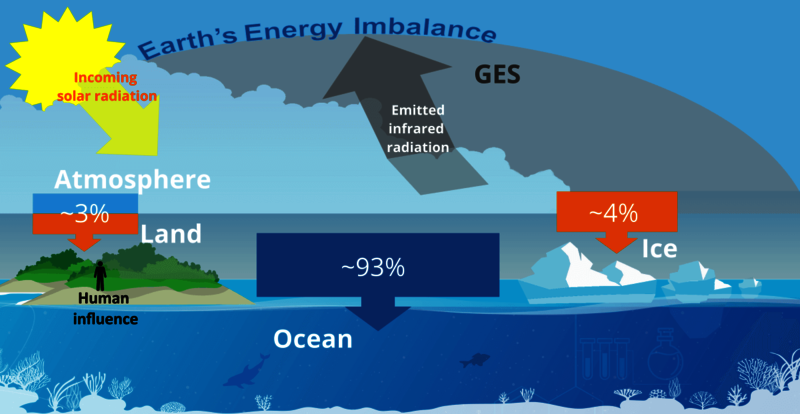A new indicator: Ocean Heat Content
The SAT-AVISO data and services centre, via the ODATIS catalogue, now has a new dataset providing indicators of ocean heat content and Earth’s energy imbalance.
Oceans’ key role regulating climate
The accumulation of human-induced greenhouse gases in the atmosphere since the start of the industrial era is disrupting Earth’s energy balance. The climate system is overheating and driving global warming. The main regulator of our climate is the oceans, which thanks to their continuous radiative, mechanical and gaseous exchanges with the atmosphere help to maintain the planet’s energy equilibrium.
As they absorb, store and transport the Sun’s heat, the oceans affect atmospheric temperature and circulation. Due to their strong heat inertia, they are the principal reservoir of heat, absorbing nearly 93% of excess energy, whereas ice—sea ice, ice sheets and land glaciers—only absorbs 4% and land surfaces 3%. We now know that our ability to understand and anticipate changes in Earth’s climate also depends on our knowledge of the oceans and how they shape it.

A new product to assess absorbed energy
The ODATIS catalogue now lists a new indicator for gauging this energy absorbed by the oceans: ocean heat content (OHC).
Ocean heat content is itself a very good indicator of the Earth energy imbalance (EEI). Estimating this is crucial to better understand how and on what timescales energy is stored.
The development of this study was funded by ESA through the MOHeaCAN project (Monitoring Ocean Heat Content and Earth Energy ImbalANce from Space). Distribution of the product through the ODATIS hub’s SAT-AVISO data and services centre and future product upgrades are backed by the French space agency CNES.







